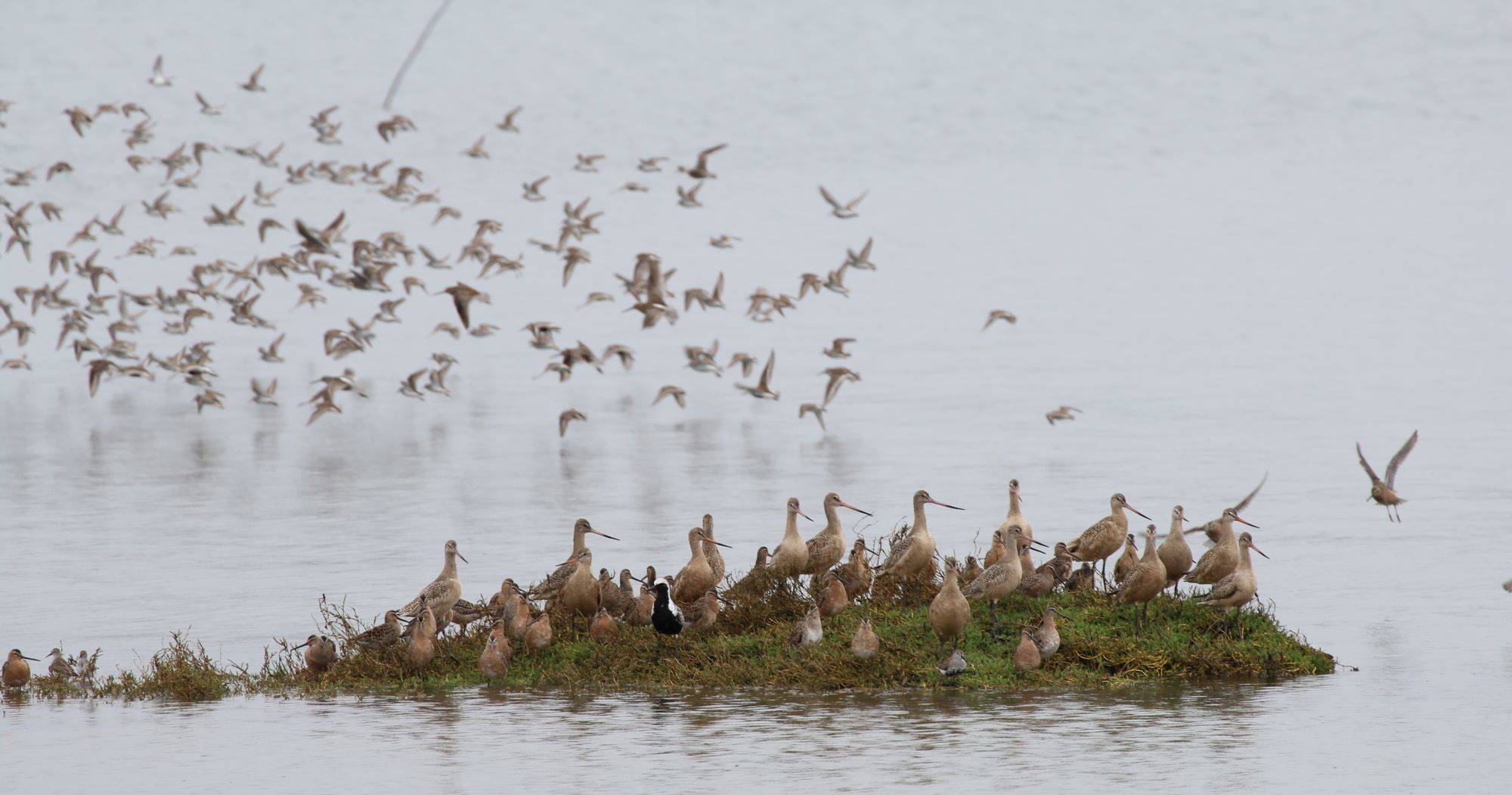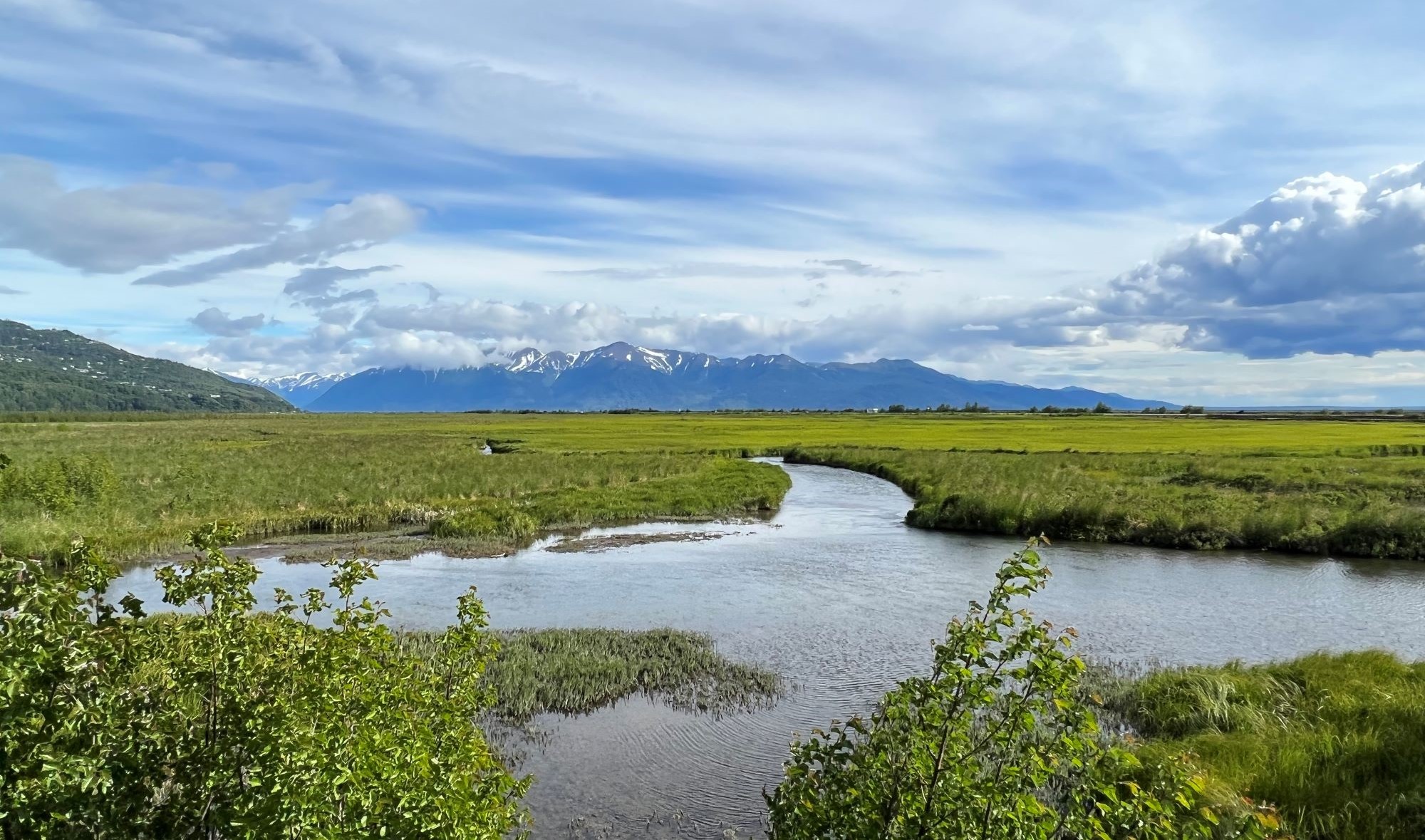Last week, the Department of the Interior announced over $87 million in funding for the Migratory Bird Conservation Fund and North American Wetland Conservation Act grants, supporting the habitat restoration and conservation for over 300,000 acres of wetland and upland migratory bird habitat across North America. Two of the accepted projects are within the Pacific Birds service area, representing a substantial investment of $4.3 million leveraged with matching partner funds totaling ~$7.7 million.
Each project will move forward critically important conservation projects in coastal habitats, protecting and restoring over 1,600 acres of waterfowl, shorebird, and migratory bird habitat in southwest Washington and 1,140 acres of wetlands including a migratory corridor and breeding habitat in Southcentral Alaska.
This incredible investment in conserving, restoring, and enhancing wetland habitats across the Pacific Birds geography, and beyond, illustrates the commitment of our partners and the DOI to creating a sustainable future for ourselves, birds, and other wildlife. You can read the full NAWCA grant announcement here and find project summaries for all funded submissions here.
Learn more about the projects:

Willapa & Chehalis Wetlands
This project is a collaboration organized by Ducks Unlimited, the Washington Department of Fish and Wildlife, and regional partners to conserve priority wetlands and bird habitats in southwest Washington. It will conserve 1,672 acres of freshwater wetlands, estuarine tidelands, working agriculture lands, Oak woodland, and temperate rainforests. These habitats support shorebirds, waterfowl, and other water-dependent wildlife such as Marbled Murrelet, Oregon Spotted Frog, Elk, Green Sturgeon, and Pacific Salmon.
Willapa Bay and Grays Harbor, directly to the north, include hundreds of thriving species: shellfish and finfish, shorebirds and migratory birds, mammals, and tiny phytoplankton, as well as threatened species such as green sturgeon. Willapa Bay and Long Beach Peninsula are designated a Western Hemisphere Shorebird Reserve Network of International Importance, and the Grays Harbor Estuary has a designation of Hemispheric Importance.
"NAWCA funding is critical to accomplishing our shared goal of conserving wetlands for the benefit of birds and people. This grant specifically will help protect habitats within a Western Hemisphere Shorebird Reserve Network of International Importance, restore historic wetlands, and create new opportunities for public access and recreation in collaboration with our partners."
- Greg Green, the Director of Conservation Programs in the Pacific Northwest at Ducks Unlimited, and one of the project leads, on the impact this grant will have.

Upper Cook Inlet: Potter Marsh Watershed
This project will conserve, restore, and enhance 1,779.3 acres including 1,140.6 acres of wetlands that provide a critical migratory corridor and breeding habitat for wetlands-associated birds in Southcentral Alaska. It focuses on threatened properties: the iconic Potter Marsh unit of Anchorage Coastal Wildlife Refuge (Refuge), the Alaska Native corporation-managed Eklutna River Estuary, and the Mat-Su Borough Settlers Bay Coastal Park. The project also adds to landscape scale connectivity between the 32,000-acre Refuge, 495,000-acre Chugach State Park, and 26,000-acre Palmer Hay Flats State Game Refuge.
The protected acquisition tracts will supply 78% of the marsh's surface water via uplands, wetlands, and streams that direct groundwater from the Chugach Mountains to the Refuge. Around 220 Refuge bird species have been recorded, approximately 160 of which are migrants or breeders Potter Marsh supports the highest density of breeding waterfowl within the Refuge, Anchorage Coastal Important Bird Area, and greater Anchorage area. During spring and fall migration, waterfowl are present in the thousands to rest and feed, including Tule Greater White-fronted Goose, Northern Pintail, Lesser Scaup, and Greater Scaup.
"This NAWCA grant brings in the final funds necessary for the Potter Marsh acquisition which we expect to complete this winter. We are thrilled to be conserving important habitat, trails, and a wildlife viewing destination in Alaska's biggest city."
